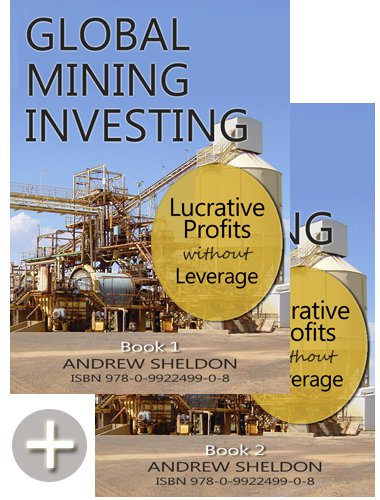
The gold price is rallying on fears of inflation. This is not a surprising development because of the precarious state of the US economy. What are the implications. Looking at the following chart, we might expect several things to happen.
Most people focus on the $US price of gold because gold is denominated in $US. But for people holding non-$US assets, this matters little.
The interesting news is the break-out of gold prices in non-$US terms. The chart above shows gold prices in UK pounds, Euro, and we can see that the gold price has broken up into new highs. Its the same with the Yen and $Australia. The implication is that its no longer just $US currency action, its a rise in the inherent value of gold. Gold is valued when markets are fearful of any of the following:
- War: There is no great threat of war at the moment that threatens the financial system, however the Iraqi war has contributed to the inflationary threat.
- Stability of the financial system: Asset values are very high, and with inflation rising, the threat of higher interest rates poses a great threat to the home affordability of new homeowners. Forced sales under a property crash is likely to send prices plummeting. Inflation is good for property, but only when valuations are reasonable. The other fear is an oil crisis as Iran attempts to pursue a nuclear option.
- Inflation: This spells the erosion of the value of money because governments increase the supply of money relative to the amount of goods produced. Over the last decade, the global money supply has grown much faster than the global economy because of credit growth.
- Yields: With the outlook for higher inflation, the yield on bonds and equities looks shaky. In these circumstances the 'non-yielding' precious metals look attractive. Real interest rates are essentially negative at the moment, so the capital gain on gold is attractive.
- Supply shortage: Too much is made of the supply shortage of gold and the Indian & Chinese demand. These countries are still quite poor and the propensity of its traditional buyers to buy falls at higher prices. Industry nor jewellery will not lead this boom, it will be hedge funds and individual hedging against inflation. There is too much money in the global economy, that will feed into gold & other precious metal markets.
Its apparent from the chart above that the price of gold is heading for $US500/oz, the high posted in 1987. This point will be a major point of resistance, which is unlikely to be broken. We are already at $US466/oz, so we are looking for another 8% move. Interestingly, the outlook for gold in non-US terms is less compelling. We are less likely to see strong gold prices in other currencies, except $A terms as global commodities demand collapses with inflationary (oil) pressures and higher interest rates. Most of the gold price action will relate to a fall in the $US - despite the prospect of higher interest rates in the US. The Fed is still well behind the curve when you consider rising inflationary expectations. In fact there is no way for the US government to avoid inflation. The only corrective action is higher interest rates and credit defaults, which will burst the credit bubble, unwinding credit instruments, and thus reducing the money supply. Household super funds will be the biggest losers.
The question remains - Will the gold price in Euro and Pound terms break out of their long term uptrend? One would think so given that the Euro money supply is currently growing at 4x the growth in the EU economy. That means too much money chasing too few goods - that's inflationary.
The relationship between the $US and the gold price remains. Some analysts assert that the correlation has disappeared, but leveraged institutional investors are merely trading the $US by going long (or short) gold. Because the gold market is a lot smaller than the $US currency market, the gold price is much more volatile. Another reason for the departure of gold prices from $US correlation is that investors are taking positions in the gold market in anticipation of $US exchange rate moves. Short term trading merely obscured the relationship between the $US dollar and gold prices.
There is often the fear that European & US central banks will sell their gold reserves into the boom. The reality is that these sales are likely to be peripheral to the speculative demand. In any case, it does not change the story. There is no where else to place money safely.
In fact buying physical gold is not the best way to get exposure to gold. I would be going for the emerging miners which don't require hedging, and which have resource upside.
Go gold!








![[Most Recent Quotes from www.kitco.com]](http://www.kitconet.com/charts/metals/gold/t24_au_en_usoz_2.gif)
![[Most Recent Quotes from www.kitco.com]](http://www.kitconet.com/charts/metals/silver/t24_ag_en_usoz_2.gif)
![[Most Recent Quotes from www.kitco.com]](http://www.kitconet.com/charts/metals/platinum/t24_pt_en_uskg_2.gif)
![[Most Recent Quotes from www.kitco.com]](http://www.kitconet.com/charts/metals/palladium/t24_pd_en_usoz_2.gif)
No comments:
Post a Comment